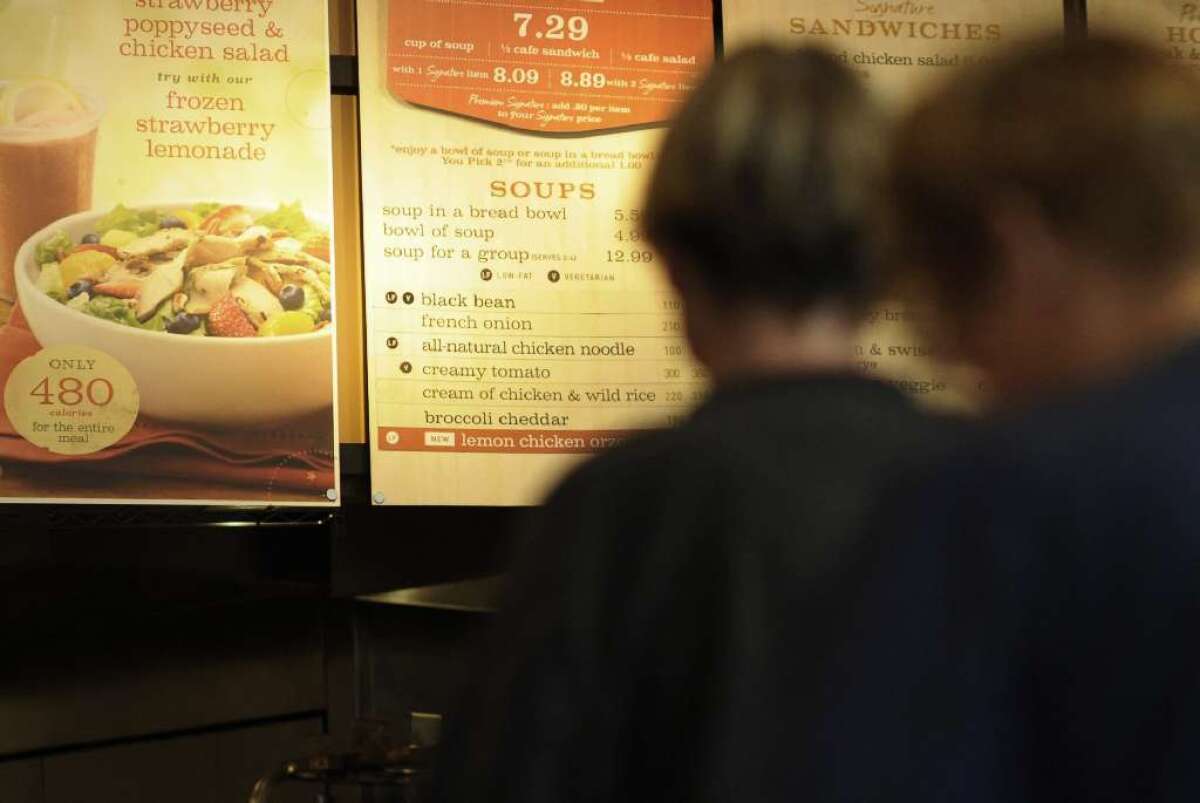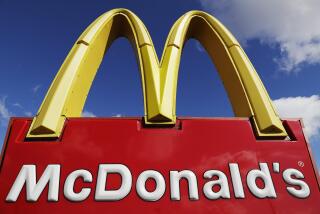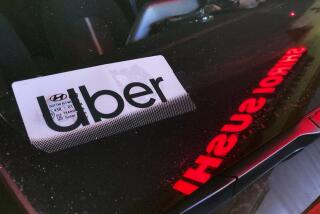Calorie posting pushes restaurants to offer less fattening fare

Does posting the calorie content of offerings prompt consumers to take in fewer calories? Perhaps, a new study suggests. But not in the way one might expect.
- Share via
Early reports suggest that restaurant patrons shown the calorie content of the dishes they may order don’t necessarily use that information to make better food and beverage choices.
But all may not be lost, a new study suggests: When eateries got ahead of a new federal mandate and voluntarily posted their offerings’ calorie load for all to see, they appeared to whittle the calorie content of their offerings more aggressively than did establishments waiting for a calorie-posting requirement to take effect.
Reducing the calorific load of menu items may not improve consumers’ decision-making. But it could just limit the damage of the decisions they make while dining, drinking or snacking away from home, the authors of the new research conclude.
In the new study, public health researchers from Johns Hopkins University, University of Pittsburgh and Harvard Medical School found that between 2012 and 2014, restaurants that moved to calorie posting early reduced the calorie content of standard items on their menus by an average of roughly 120 calories. New food items introduced by these restaurants averaged 146 fewer calories than their old standbys.
In 2014, restaurants that embraced calorie labeling averaged 139 fewer calories per item than restaurants without labeling. Similar differences were found in 2013 and 2012.
“The greatest impact on mandatory menu labeling on population health may come from restaurants’ changing the calories of their menu items instead of consumers’ changing their behavior,” said the study authors, writing in Health Affairs on Monday.
It’s been almost a decade since public health officials and activists first suggested that if burgeoning obesity rates were to be reversed, consumers eating away from home needed to make better-informed decisions. In December 2016, a federal law takes effect that requires the posting of food items’ calorie counts not only at chain restaurants and fast-food joints, but also in establishments such as movie theaters, bowling alleys, snack counters, coffee shops and ice-cream parlors.
Advocates of calorie posting were betting that when confronted with the calorie loads delivered by their favorite menu items, consumers would scan the menu for acceptable lower-calorie alternatives. They also hoped that restaurant giants would be shamed by the uniformly fattening fare they offered, and make menu changes to accommodate their health-conscious customers.
Some of the most insightful research on calorie posting, however, suggests that restaurants have been more nimble in responding to calorie-posting requirements than consumers.
When pulling into a fast-food restaurant, about 70% of customers acknowledge they rarely diverge from their “usual” order. One study found that two years after the calorie content of menu items first started appearing in Seattle chain restaurants, just 1 in 4 customers who frequented those establishments said they used that nutritional information to guide their consumption choices. Roughly 4 in 10 customers said they didn’t even notice the new information.
By contrast, calorie-shaming has moved such restaurant giants as Starbucks, IHOP and McDonald’s to reform some of their most decadent menu items and offer more low-calorie options. After a welter of its offerings were called out as “extreme eating” by the Center for Science in the Public Interest, the Cheesecake Factory reformulated several of its dishes and added a “SkinnyLicious” menu of meal offerings coming in at around 600 calories.
“I was sick of winning that prize,” Cheesecake Factory founder and Chief Executive Officer David M. Overton told the Wall Street Journal.
Every day, roughly one-third of all American adults and children eat at a fast-food restaurant. So scaling back the calorie content of customer favorites can have an effect, said the authors of the latest study.
The current obesity epidemic appears to be the result of 220 excess calories consumed daily per adult and 165 extra calories consumed daily by children. Knocking off between 120 and 150 calories each time a diner eats at a fast-food restaurant goes some way to rectifying that imbalance, the authors said.
Follow me on Twitter @LATMelissaHealy and “like” Los Angeles Times Science & Health on Facebook.
ALSO:
How much does severe obesity cost California? About $9.1 billion
Junk food ads on TV tend to target African American and Latino youth
Scientists asked six men to eat 6,000 calories a day in bid to fight obesity







